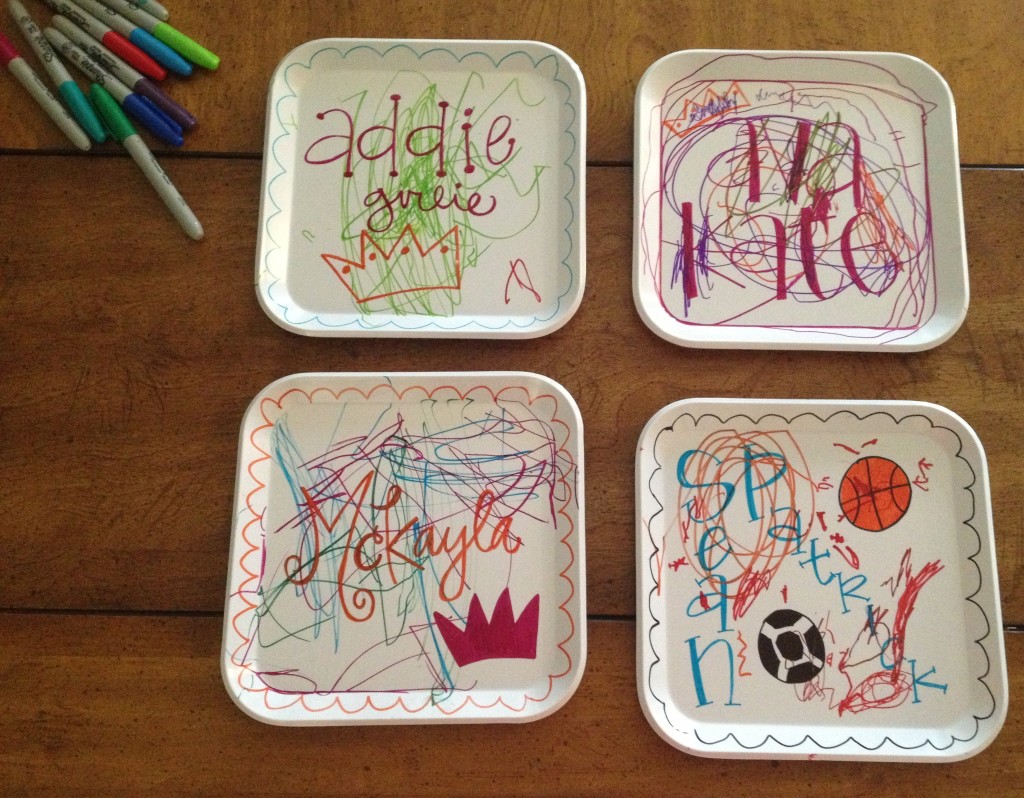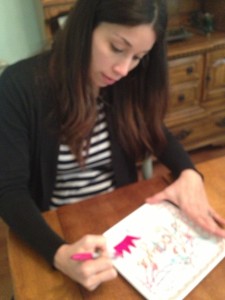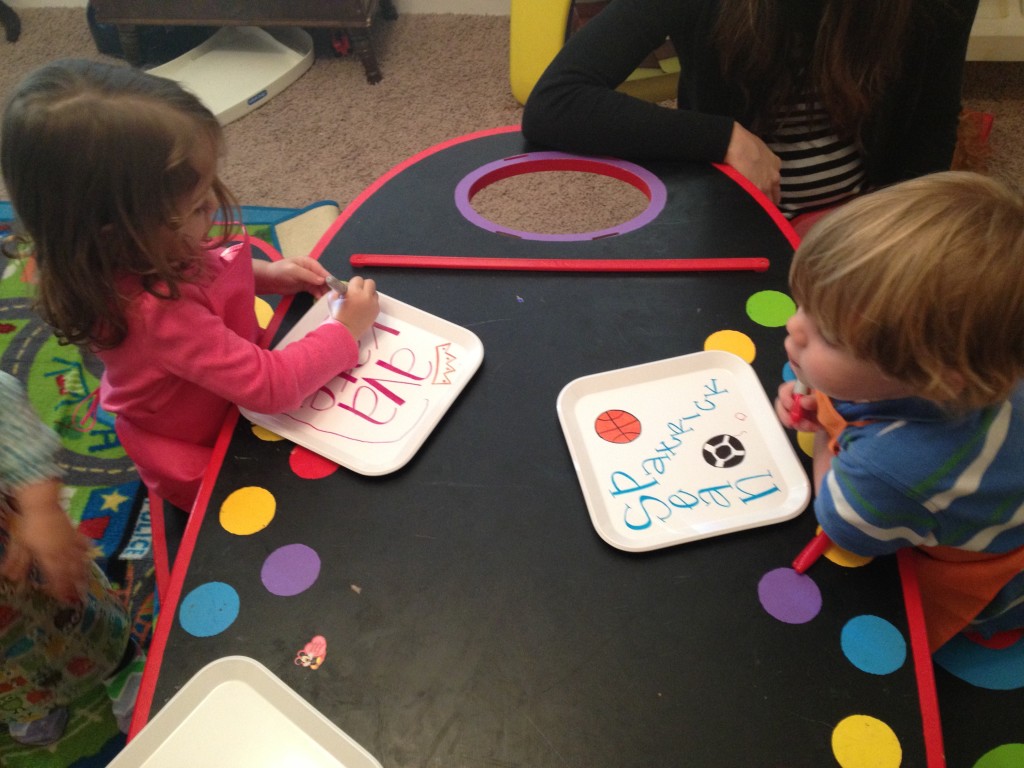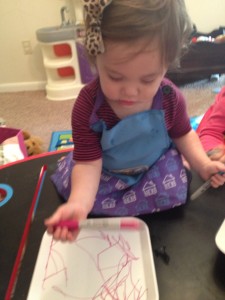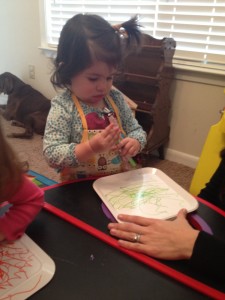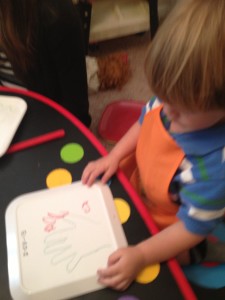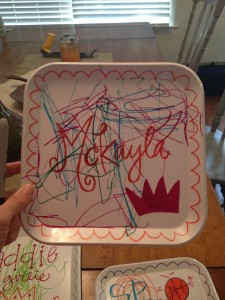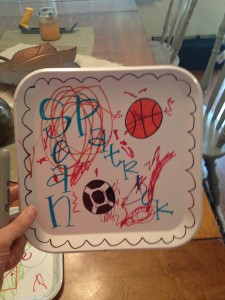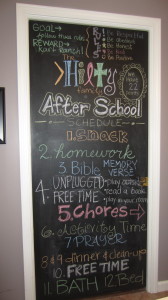 I recently wrote a post about a Routine Change for our after school schedule that I posted on our chalkboard door.
I recently wrote a post about a Routine Change for our after school schedule that I posted on our chalkboard door.
I also posted our house rules on that same door, in plain view to remind us how to behave throughout the day.
1. Be Respectful
2. Be Obedient
3. Be Honest
4. Be Kind
5. Be Positive
I once visited a classroom that had just two rules: be respectful and be obedient. Brilliant! I mean, you really don’t need much more than that because those are two rules that any type of disobedience can fall under. I call them “umbrella” rules.
I decided to use that in my house. Once your kids get a full understanding of respect and obedience, they are extremely effective for toddlers. However, those are BIG words for little kids, so don’t expect them to immediately understand them. However, if you use the same language a few times while modeling each of the behaviors, then your 2 year old will start telling you all about the appropriate behaviors he or she just displayed. (They also may start questioning you about your appropriate or inappropriate behaviors – but that’s all a part of the learning process).
How to teach your kids about respect and obedience:
-Define the new vocabulary
“Respect means you are being nice and talking nice to your mommy, daddy, siblings, friends and other adults. ”
“Obedience means you listen the first time and always remember the appropriate behaviors you should be showing at all times.
-Model the new vocabulary
“‘Mommy, may I please have some milk?’ is a very respectful way to ask for something. Can you say that? ::wait:: Great! I love how you used your manners and talked to me in a sweet tone. I appreciate you showing me respect. That was a very respectful way to ask me for something.”
“If I tell you to please pick up your clothes, a respectful response should be, ‘Yes, ma’am,’ and then you show your obedience by picking up your clothes right away. Listening the first time every time is a great way to be obedient.”
-Show the opposite behaviors and define them
“If I tell you, ‘Gimme some milk!’ Is that showing respect? No. That is called disrespect and it is not allowed. How can we rephrase or say it again in a respectful tone? ::wait:: That’s right! You say, ‘May I please have some milk?’ I love how respectful that sounds.”
“If I ask you to pick up your clothes and you don’t look at me, don’t listen to me, or tell me, ‘no,’ that is called disobedience and it is not allowed. Instead, what should we do? ::wait:: You’re right! Be obedient! We do the task right away! The VERY first time you are asked to do it! But first, how do we show respect when asked to do something? ::wait:: You’re right. We say, ‘Yes, ma’am.'”
-Model different scenarios of respect, disrespect, obedience and disobedience and have your child label each
“Is this respect or disrespect: ‘Moooooom I wanted to play with that toy!’ ::wait:: “Right. Disrespect. Do we allow disrespect? No.”
“Can you please throw this away? Yes, ma’am! ::throw trash away:: Was that obedience or disobedience? Right! Say, ‘great job, Mommy! Thank you for being obedient!'”
-Have your child generate responses from cues
“How can we show respect to our friends? ::wait:: You’re right… share our toys! Great idea!”
“If I ask you to clean up your spilled milk, what would you do to be obedient?”
-Praise and repeat language
“Thank you for being respectful!”
“I love how you were being obedient! You listened the very first time!”
-Frequent Reminders
“The way you said that was disrespectful, can you please change your behavior and use a respectful tone?”
“I have already told you once to do _____. You have not done ____. Is that being obedient?”
Sure, kids slip up from time to time, but by effectively setting your expectations for behavior and being consistent with praising and correcting, your child will likely choose to meet those expectations.
Now after having these rules for a while, I began to notice a few behaviors that my child was displaying that I still wanted to change. It was necessary for me to set aside a few more rules to clarify which behaviors I did not like, even though these rules can also fall under the first two big umbrell
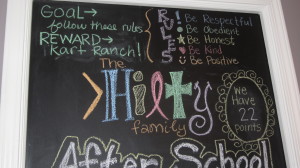 a rules.
a rules.
3. Be Honest
4. Be Kind
5. Be Positive
My kindergartner, bless his little imagination, can get himself into a lot of trouble with the stories he tells. He is definitely the “dog-ate-my-homework” kid, so we instated the “be honest” rule.
He and his toddler brother were also starting to pick on each other around the same time. Sure, they were both being respectful and obedient toward Mom and Dad, but were they showing the same courtesy to each other? No. So we instituted the “be kind” rule.
Our last rule is to “be positive.” Sure, we can all have bad days (even Mommies and Daddies), but our newest rule is to take a few minutes to yourself to reflect, and then when you return to be with the rest of the family, you must come with a new and improved new attitude. And it must be positive.
After all is said and done, I have been rewarding my kids with tally marks when
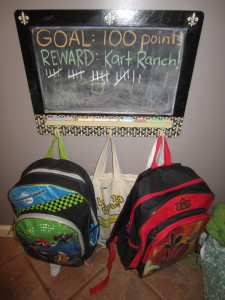 they follow the rules. We set a goal for our family: 100 tally marks = a trip to Kart Ranch (similar to Chuck-E-Cheese). It’s been way more positive than punishments for not following the rules and they have been more obedient all around, knowing that there is a reward – a positive consequence – at the end. Just a little encouragement for them.
they follow the rules. We set a goal for our family: 100 tally marks = a trip to Kart Ranch (similar to Chuck-E-Cheese). It’s been way more positive than punishments for not following the rules and they have been more obedient all around, knowing that there is a reward – a positive consequence – at the end. Just a little encouragement for them.
What kinds of rules do you have in your home? Which behaviors do you want your kids to change? What new rules would you like to add to your list of expectations for your kids to follow?

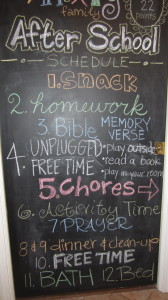
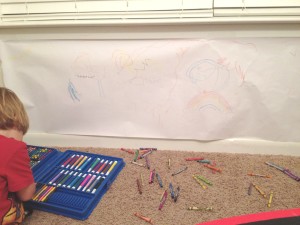
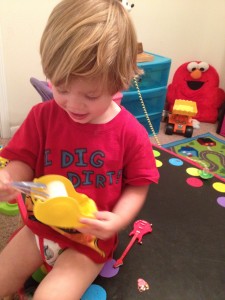
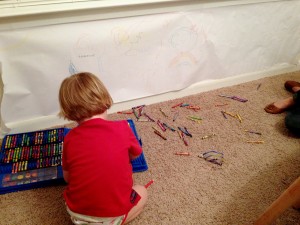
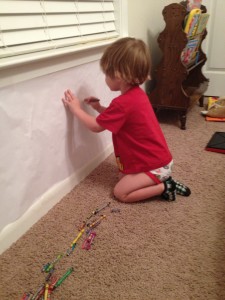
![IMG_6932[1]](https://themommyteacher.com/wp-content/uploads/2013/03/IMG_69321-300x225.jpg)
![IMG_6931[1]](https://themommyteacher.com/wp-content/uploads/2013/03/IMG_69311-e1362537241250-225x300.jpg)
![IMG_6928[1]](https://themommyteacher.com/wp-content/uploads/2013/03/IMG_69281-300x225.jpg)
![IMG_6933[1]](https://themommyteacher.com/wp-content/uploads/2013/03/IMG_69331-e1362547826515-225x300.jpg)
